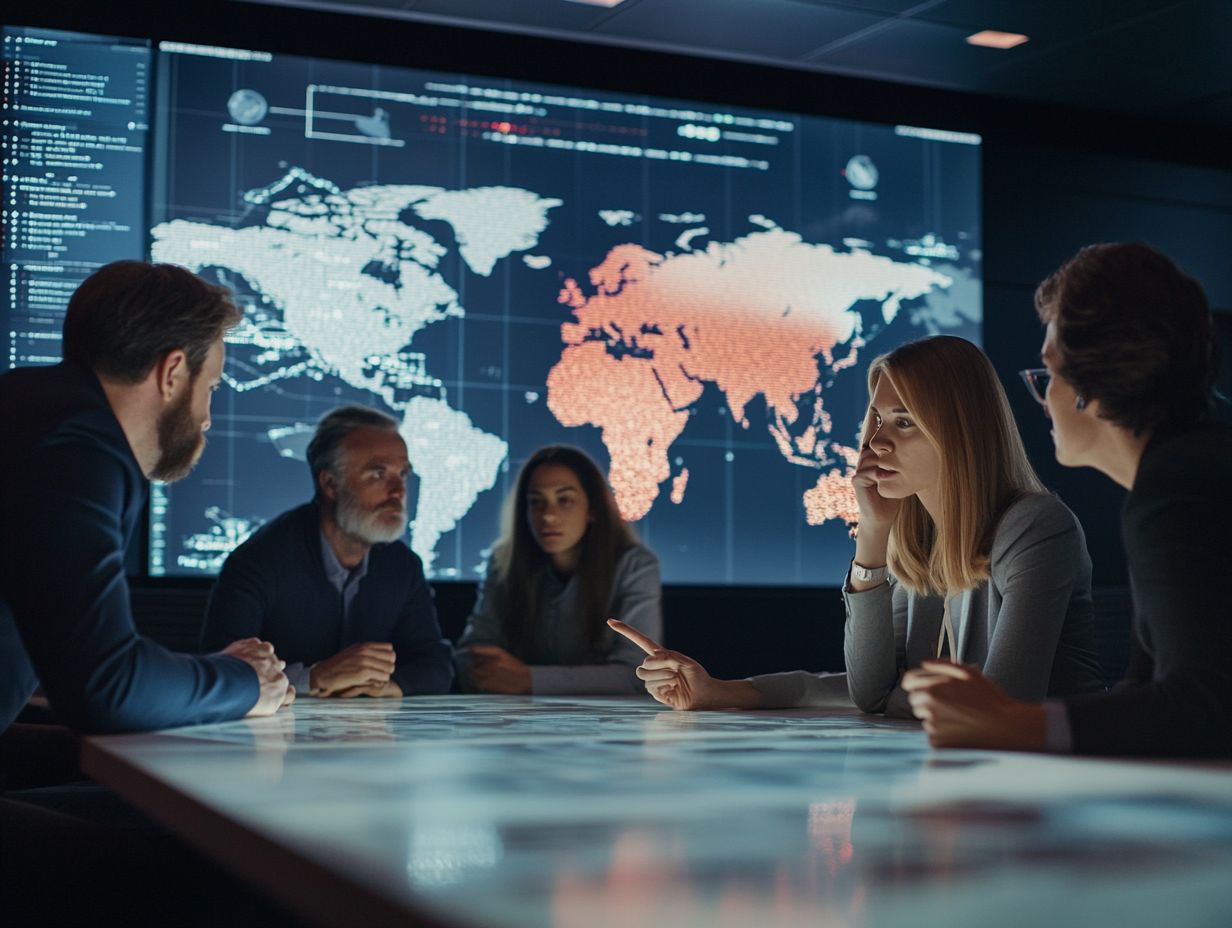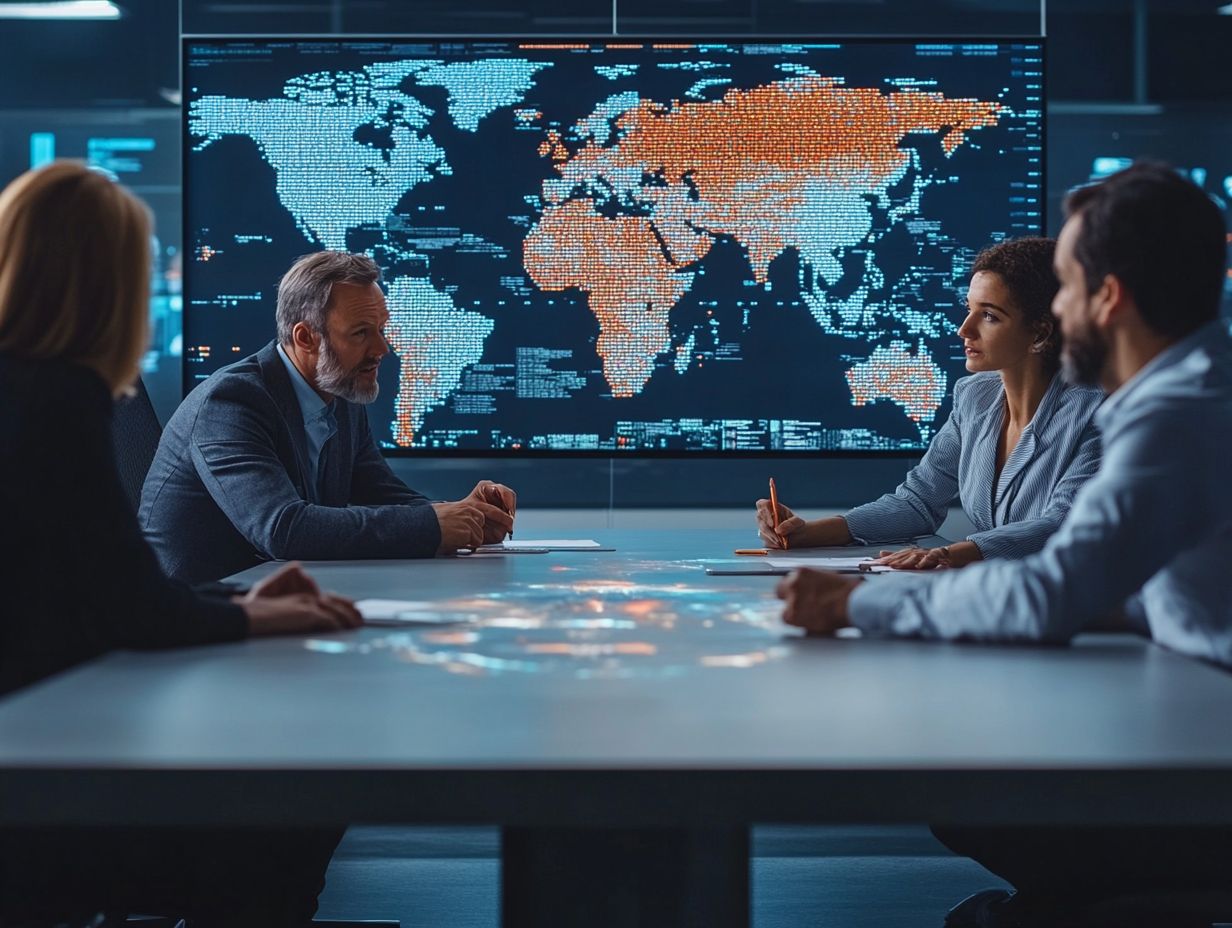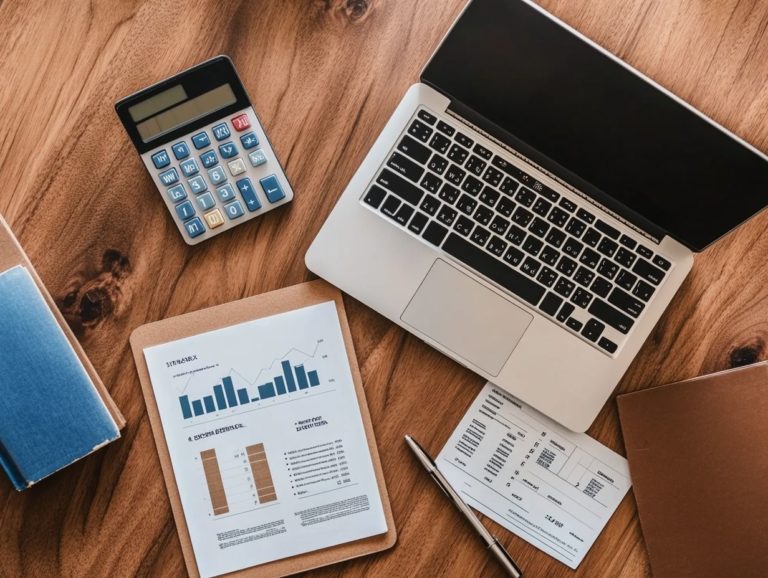Analyzing the Impact of Global Events on Risk
In today s interconnected world, grasping the nuances of risk analysis is more essential than ever!
Consider the various influences at play, from natural disasters to economic shifts and political upheavals. All of these can profoundly affect your risk assessments. This article delves into what risk analysis truly means and its purpose, while examining the internal and external factors that shape it.
You ll discover how global events such as natural disasters and economic changes affect risk levels in significant ways.
Effective strategies for mitigating risk will be presented, complemented by real-world case studies that offer valuable insights. Prepare to navigate the complexities of risk analysis and uncover ways to better equip yourself for the uncertainties that lie ahead!
Contents
- Key Takeaways:
- Understanding Risk Analysis
- Factors Affecting Risk Analysis
- Global Events and Their Impact on Risk
- Mitigating Risk in the Face of Global Events
- Case Studies: Analyzing the Impact of Global Events on Risk
- Frequently Asked Questions
- What is the impact of global events on risk?
- Why is it important to analyze the impact of global events on risk?
- How does political instability impact risk?
- What are the potential effects of natural disasters on risk?
- How do economic downturns influence risk?
- What are some strategies for mitigating the impact of global events on risk?
Key Takeaways:

- Risk analysis is crucial for understanding potential threats and their impact on an organization.
- Both internal and external factors influence risk analysis. It’s important to consider both to accurately assess risk.
- Global events like natural disasters, economic shifts, and social changes significantly impact risk and must be continuously evaluated and mitigated.
Understanding Risk Analysis
Understanding risk analysis is essential in today s interconnected landscape, where organizations face many challenges from geopolitical, economic, and environmental factors. This process involves a thorough evaluation of potential risks using quantitative methods (which use numbers) and qualitative methods (which focus on descriptions). This enables you to systematically assess your exposure to vulnerabilities and capacities.
This approach allows you to create comprehensive disaster risk management strategies that align with established frameworks like the UNDRR (United Nations Office for Disaster Risk Reduction) and the Sendai Framework (a global plan to reduce disaster risk). By incorporating innovative solutions for resilience, you can enhance your risk knowledge and make informed decisions to effectively mitigate potential impacts.
Definition and Purpose
The definition of risk analysis involves a systematic process where you identify, evaluate, and prioritize risks to mitigate their impact on your organization or community.
By embracing this approach, you can proactively devise strategies that reduce potential threats, cultivating a culture of preparedness and resilience. This method actively protects your valuable assets and boosts stakeholder confidence, creating an environment where informed decisions flourish.
In the context of disaster risk management, for instance, risk analysis is crucial for pinpointing vulnerabilities, enabling you to allocate resources more effectively. Ultimately, grasping the nuances of risks significantly shapes your organizational decision-making, ensuring that stakeholders are well-equipped to navigate uncertainties and uphold operational continuity.
Factors Affecting Risk Analysis
Factors that influence risk analysis can be broadly divided into internal and external influences. These elements play crucial roles in shaping the risk landscape that organizations must adeptly navigate.
Internal and External Influences
Internal influences on risk analysis encompass organizational policies, resource allocation, and the expertise of personnel, while external influences stem from geopolitical, economic, and environmental factors.
These influences work together to shape your organization s overall vulnerability capacity. For example, operating in a volatile geopolitical landscape can lead to sudden disruptions from political upheaval, directly impacting operations and financial stability.
Economic factors like inflation or currency fluctuations are critical in your risk assessment. Reflect on how recent unpredictability in financial markets has been largely fueled by inflation concerns and central bank policies.
Environmental issues such as climate change require proactive measures in risk analysis. It’s essential to anticipate disruptions in supply chains or changes in regulations.
These interconnected dynamics emphasize the importance of integrating diverse considerations, allowing you to navigate today s risk landscape with greater confidence!
Global Events and Their Impact on Risk

Global events, whether they are natural disasters or pandemics, profoundly affect risk profiles across diverse sectors. This requires careful evaluations. You need adaptive management strategies to handle the complexities that arise.
Evaluating the Effects of Natural Disasters
Evaluating the effects of natural disasters is crucial for effective disaster risk management. It enables you to grasp the vulnerabilities and capacities within affected communities.
Using frameworks like the United Nations Office for Disaster Risk Reduction (UNDRR) resilience approach helps in understanding how specific circumstances impact a community’s ability to withstand and recover from calamities. This understanding directly informs the creation of tailored interventions that prioritize risk reduction.
By grasping the intricacies of vulnerability, capacity, and exposure, you can shape holistic risk management strategies. These strategies are not just proactive but also intricately connected to the local socio-economic context. Such methodologies ensure that resources are allocated efficiently, bolstering resilience and enhancing overall preparedness for future events.
Assessing the Impact of Economic Events
Assessing the impact of economic events is essential for you to understand how financial market volatility can shape how your organization runs and influence your long-term goals.
Considering significant occurrences, such as the 2008 Global Financial Crisis, you may have realized that shifts in the economic landscape can drastically alter how your organization operates and your long-term objectives. The aftermath of such crises underscores the need for you to reevaluate your internal controls and fraud risk analysis methodologies.
You must adopt a proactive approach to manage global political issues effectively. These measures can enhance your resilience in the face of unpredictable economic downturns, ensuring you are well-prepared to navigate the complexities of an ever-evolving financial environment.
Examining Political and Social Events
Political and social events, including political instability, can dramatically influence market dynamics and, in turn, your organizational risk assessments.
When leadership changes or civil unrest arises, you may find your organization navigating a swiftly shifting landscape of compliance requirements. Such upheaval can lead to alterations in regulatory frameworks that dictate how your firm manages its operations.
This can potentially affect everything from financial disclosures to employee practices. As you strive to meet these new standards, stakeholder confidence might waver if your compliance efforts seem cumbersome or ineffective.
The uncertainties surrounding these events can generate a ripple effect, prompting you to reassess your governance strategies. This reassessment will help reassure investors, clients, and employees alike, preserving trust and stability in these turbulent times.
Mitigating Risk in the Face of Global Events
You must act now! Mitigating risk during global events requires a proactive mindset. By leveraging effective risk management strategies and innovative solutions, you can significantly enhance your organization s resilience.
Strategies for Minimizing Risk

Minimizing risk requires both quantitative and qualitative strategies. Tailor these to your organization s unique needs.
You can harness sophisticated data analysis to assess potential financial impacts. Foster open communication channels so team members can share their insights and experiences.
This dual approach deepens your understanding of numerical data while illuminating subjective factors that may not be immediately visible in spreadsheets. It paints a more comprehensive picture of potential vulnerabilities.
Financial risk management is crucial in this endeavor. Embracing new ideas about risk whether through new technologies or methodologies significantly enhances your mitigation efforts.
Ultimately, this fosters more resilient organizational practices.
Case Studies: Analyzing the Impact of Global Events on Risk
Case studies offer invaluable insights into the impact of global events on risk. They vividly illustrate how organizations have navigated challenges such as the COVID-19 pandemic and the resulting supply chain disruptions.
Real-World Examples and Lessons Learned
Real-world examples, like the Lehman Brothers collapse during the 2008 Global Financial Crisis or ongoing challenges in Turkey and Syria, underscore the vital importance of effective risk assessment and management.
These instances remind us of the devastating consequences that can emerge from inadequate preparedness and oversight. Organizations in various sectors finance, healthcare, or disaster management faced unprecedented challenges due to the COVID-19 pandemic.
Healthcare providers had to swiftly adapt to increased patient loads and supply chain disruptions, exposing significant gaps in their contingency plans.
In the financial sector, many firms learned the necessity of maintaining liquidity buffers and conducting robust crisis simulations. The key takeaways emphasize that cultivating a culture of risk awareness, investing in technology for real-time monitoring, and developing flexible response plans can bolster resilience and adaptability.
Frequently Asked Questions
What is the impact of global events on risk?
The impact of global events on risk refers to how major incidents or occurrences on a global scale can affect risk levels in various industries, businesses, and financial markets. Understanding the influence of global events on stock trends is crucial, as these events can include natural disasters, political instability, economic downturns, and more.
Why is it important to analyze the impact of global events on risk?

Analyzing the impact of global events on risk helps businesses and organizations prepare for potential disruptions and mitigate losses. Understanding how global events influence investment strategies also allows them to make informed decisions and adapt to changing market conditions.
How does political instability impact risk?
Political instability, such as civil unrest or regime changes, creates uncertainty and volatility in financial markets. This leads to increased risk for businesses and investors, as well as potential disruptions in supply chains and operations.
What are the potential effects of natural disasters on risk?
Natural disasters, such as hurricanes, earthquakes, and pandemics, can significantly impact risk. They cause physical damage to assets, disrupt supply chains, and lead to financial losses for businesses and investors.
How do economic downturns influence risk?
Economic downturns, such as recessions or market crashes, increase risk for businesses and investors. This results in decreased consumer spending, market volatility, and potential business closures.
Now is the time to learn from past events and strengthen your risk strategies. Don t wait for the next crisis to act! Start enhancing your organization s resilience today!
What are some strategies for mitigating the impact of global events on risk?
To effectively tackle risks from global events, spread your money across different options. Regularly assess your risks and keep an eye on world news to stay ahead.
Don’t wait! Having a solid backup plan can make all the difference during disruptions.






